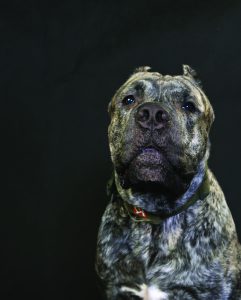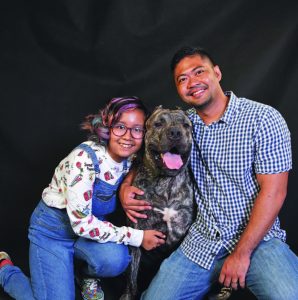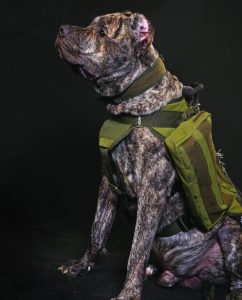It’s intimidating meeting a Presa Canario up close. Rufus, accompanied by human companion Jino Patajo, is no exception. One immediately knows that Rufus, who is one year and nine months old, is no ordinary large-breed dog.
This powerful Molosser canine, whose name literally translates as “the Canary Dog of Prey”, fills any space it enters with an undeniable physical presence, its massive head and attentive gaze very hard to ignore. The word “Presa” can also be translated to mean to catch or hold. And no other dog has the same claim to fame as the animal symbol for a whole African archipelago in Spain, the Gran Canaria.

“I started out with Shih Tzus in 2003,” says human companion Jino Patajo with a smile. After getting married in 2015 and moving on to Bulldogs, Jino wanted another type of dog that could keep up with his active lifestyle, which included biking and walking regularly. A friend of Jino’s suggested the Presa Canario and soon enough, Jino had one female five-year-old adult and a seven-month-old female puppy. This started him on the road to nurturing this rare Spanish dog breed.
Controversial Beginnings
After the conquest of the Canary islands in the 15th century by the Spaniards, it was thought that the cattle dog, the Iberian Presa or Perro de Ganado Majorero, coexisted and interbred with other molossoid-type dogs. The resulting Canary Prey dogs from this intermingling helped the local people guard their farms, hunt wild dogs, and protect and herd cattle. Presa Canarios were loyal, hard-working dogs from the very beginning.
But there was also a dark side in their history: this breed was used for dog fighting in the islands. In the 1940s, dog fighting was finally prohibited, but still with a few secret competitions in the next decade. It was during this time that the Presa Canario breed nearly became extinct and the few numbers remaining were relegated to some farmers and herdsmen.
Surge of Energy
Jino compares a Presa Canario’s energy to a rechargeable battery. After a tiring activity, his own Presa Canario companion, Rufus, lies down for a few minutes and is alert and energetic all over again.
A lot of exercise is needed to keep them in a calm and stable state.
Living with a Presa Canario
Jino relays how his experience was initially like. “When I got my first Presas, I was scared because they looked like really intimidating pitbulls. But once the dogs were turned over to me and I saw how loving they were, that’s when I fell in love with them. I never experienced this huge affection with small dogs — they wanted to be with me wherever I went and just wanted to be members of the family.”
There are two types of Presa Canario: the Presa Canario is a working dog while the Dogo Canario is more of a show dog. Rufus, our cover dog, is a working dog who undergoes regular protection training to hone his innate guardian dog instinct.
For Rufus’ ears, Jino went for a battle crop rather than the usual short crop because he was already about seven months old at the time. There were initial plans of not cropping his ears at first but during rough play, other dogs kept going for his ears.
With regards to temperament, Jino describes his Presas as being incredibly docile and calm but during playtime, they turn into very physical, active, and playful animals. Their big size just makes the play a little rougher compared to small dogs but this is where the human must assert their being the pack leader.
No Space Hogger
Jino shares that you don’t need a big house or living space for these powerful dogs, but regular exercise should definitely be part of one’s daily ritual with them.
A minimum of one hour a day should be spent walking, biking, or even doing weighted exercises with the dog. These activities also serve as mental exercises for Presa Canario canines while strengthening the human’s bond with them.
Gentle Giants
Jino is aware of the bad rap the Presa Canario gets as one of the most vicious dog breeds in the world, to which he says, “I always let the breed speak for itself. You have to see them and interact with them in person to know. For Presas, you really have to step up and be the pack leader and alpha.”
They are minimal shedders and droolers who are generally quiet and composed, unless their area of responsibility is encroached upon. “It’s up to the owners of the dogs to enforce rules and limitations for the dog to follow. Even Cesar Millan says it’s not the dog’s size but the energy that the owner projects to the dog.
“I could tell you everything I know about Presas but it still wouldn’t do them justice. They really are a very special breed.”
This appeared in Animal Scene magazine’s September 2018 issue.









